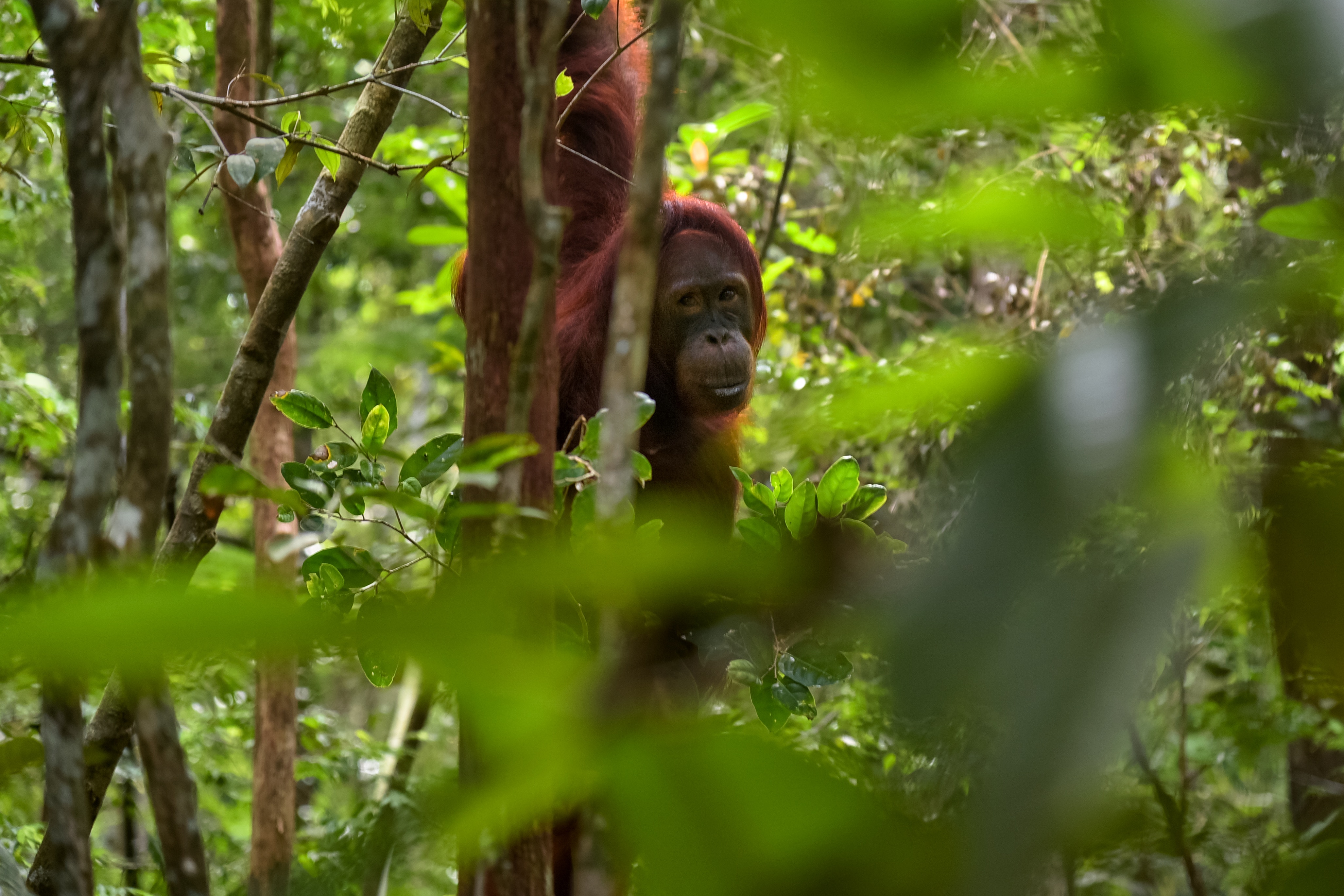This year’s team included Fauna & Flora International’s (FFI) Head of Marine Conservation, Nicola Frost, with the results published in the scientific journal Trends in Ecology and Evolution.
“Horizon scanning provides a valuable chance to look ahead to potential new threats and opportunities, and to consider the implications for our work and how we might plan to deal with these if they arise,” says Nicola Frost. “FFI has developed pioneering programmes of work in response to the outcomes of previous annual horizon scans – such as our work to tackle marine microplastic pollution.”
The 15 most notable topics identified this year have been compiled based on their novelty, potential impact and growing importance. Issues span land, air and sea, and range from food production to major new infrastructure projects.
1. All change for blue carbon?
Antarctic ice is melting faster than previously projected. What is not so clear cut is the impact this will have on biodiversity and carbon cycles. Antarctica’s deep-sea life could multiply, probably enhancing oceanic (or blue) carbon storage. Where increasing numbers of icebergs collide with the ocean floor, however, resultant losses to seabed organisms could shrink blue carbon.
2. Unlocking Earth’s frozen toxin
Permafrost, the perpetually frozen layer of soil often found in polar regions, holds vast stores of mercury. As rising temperatures promote permafrost thaw, leakage into water systems may distribute this toxic element widely, bringing the prospect of far-reaching harm to animal, plant and soil microbial life.
3. Alternative concerns
Increasing public concern over plastic pollution has provoked interest in alternatives to plastic, but the risks surrounding production of novel alternatives, including biomass-derived plastic, have not yet been fully scrutinised. What’s more, developing alternatives may take the spotlight off the wider benefits of reducing overall plastic consumption.
Nicola Frost says: “The rise in alternatives to plastic is an issue of particular concern for FFI. We need to ensure that we are looking carefully at the proposed alternatives in order to avoid false solutions that could simply replicate the problems associated with plastic in our oceans, or shift that burden to other ecosystems.”
4. “Shinorine-sunscreens”
Coral reefs are increasingly under pressure from global changes, but one, perhaps surprising, threat comes from sunscreens. Two common ingredients – oxybenzone and octinoxate – may contribute to coral bleaching. Shinorine (an amino acid) strongly absorbs ultraviolet light so seems a potential substitute for these damaging components, but the effects on marine organisms of widespread use of “shinorine-sunscreen” are unknown.
5. New canal brings flood of questions
A newly proposed canal in northern China, intended to irrigate vast expanses of unproductive semi-desert, may enable agricultural expansion. Resultant altered river systems and immense water extraction could, however, be bad news for native species and ecosystems, both locally and downstream. These hydrological changes may even influence regional climate and the probability of earthquakes.
6. Clouds with silver linings
China’s state-run Aerospace Science and Technology Corporation proposes to establish a network of cloud-seeding devices. By releasing silver iodide particles into the atmosphere, causing cloud vapour to form droplets, these devices artificially induce precipitation. Such an extensive scheme could alter weather patterns on a vast scale, potentially bringing new threats to native species adapted to current conditions.

7. Salt of the earth
Rising sea levels and widespread irrigation is intensifying agricultural soil salinity. Staple crops cannot currently tolerate these increased salt levels, so agronomists are harnessing genetic technology to seek new, salt-tolerant varieties. Resultant agricultural expansion may enhance food production, but the associated ecological effects may threaten native species.
8. Gene-edited plants get the green light
Novel gene-editing techniques, allowing faster and more precise alterations to crop traits than traditional breeding methods, could increase productivity and enable crop diversification. The US Department of Agriculture will not regulate these new varieties, which could either ease agricultural pressure on natural systems, or promote further intensification with unforeseen effects on native species.
9. The butterfly effect
New varieties of oilseed crops, genetically engineered to produce two omega-3 fatty acids, deliver nutritionally enhanced food and may considerably reduce demand for fatty acids from wild-caught fisheries. These introduced compounds do not usually occur in terrestrial plants, however, and could therefore provoke unintended consequences in animals, particularly insects.
10. Microbiome manipulation
Like humans, plants have a microbiome: a diverse community of beneficial microbes. Manipulation of plants’ microbiomes can enable re-establishment of key ecosystem functions such as soil nutrient cycling, thereby improving agricultural yields and enabling cropping of marginal areas. Further land conversion to agriculture, however, may limit available habitat for native species.
11. Growing threats from palm oil
The islands of the Indo-Malay Archipelago are hugely diverse, with many species found nowhere else on Earth. These small islands support fragile ecosystems threatened by ever-intensifying deforestation. Oil palm expansion brings threats to native species wherever these trees are grown, but as plantations creep into mega-diverse regions such as the Indo-Malay Archipelago, these ecosystems could be hit especially hard.

12. The rush for the deep
The species found in the biologically rich mesopelagic zone – extending 200 to 1000 m below the ocean’s surface – are crucial players in marine food webs and oceanic carbon cycling. Although previously inaccessible, technological developments mean mesopelagic fish are now of rising interest for commercial exploitation, which could prove detrimental for marine ecosystems and global climate.
13. Future feedstocks
Ever-increasing global demand for animal-based protein means the associated harmful environmental effects are set to rise. Novel livestock feed sources, such as industrially produced microbial protein, may reduce these negative impacts. What this system change could mean for human livelihoods is, however, unclear.
14. Insure and grow
Many of us insure our assets or belongings, but, until now, ecosystems and their valuable natural assets were not considered. New insurance schemes to cover natural assets – such as coral reefs – could protect against loss or damage. Initial schemes could be replicated and extended to safeguard and enhance diverse natural systems around the world.
15. Global agreements in the spotlight
Chlorofluorocarbons (CFCs) are the primary players behind a hole forming in Earth’s protective ozone layer. Since a global ban on their production in 2010, levels of one potent CFC are declining more slowly than expected, prompting concerns that CFCs may now be in illegal production. If so, the credibility of global environmental governance will surely be questioned.
Read about last year’s projections here.
About the Author
Sarah Pocock is a Communications Officer (Project Support) with Fauna & Flora International. With an MSc in Biodiversity Conservation and a background in plant science, Sarah is keen to get people excited about botanical conservation.
This article first appeared on the Fauna & Flora International blog and was republished here with permission.


Add the first post in this thread.